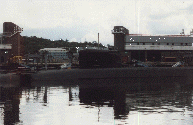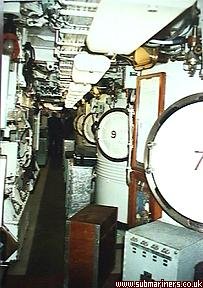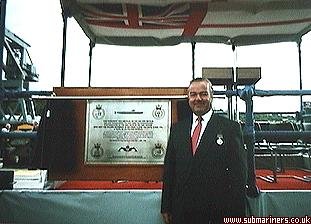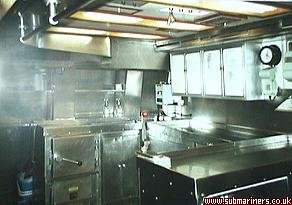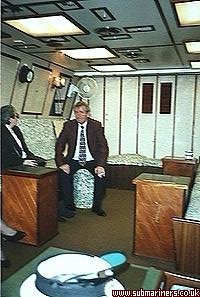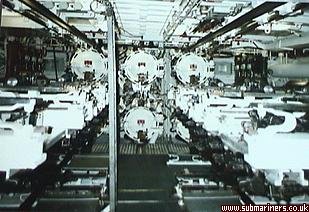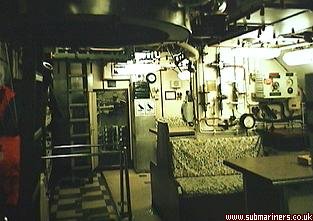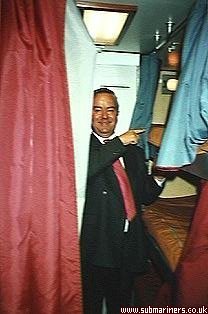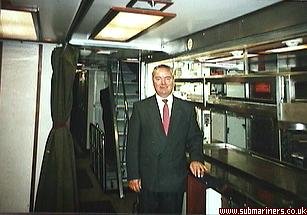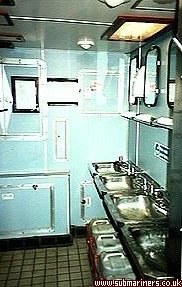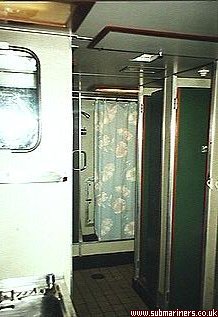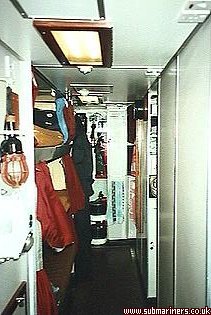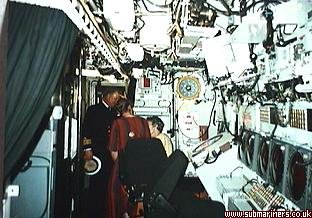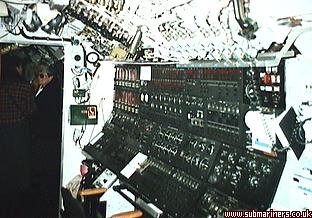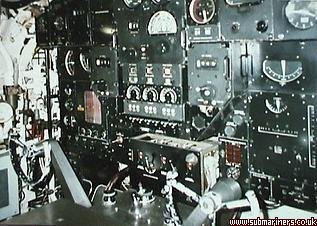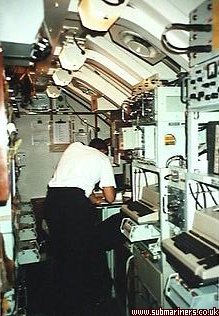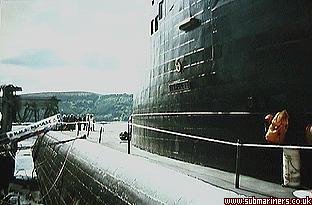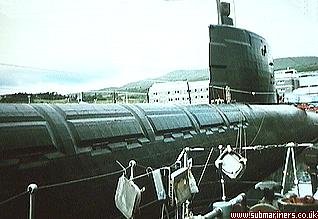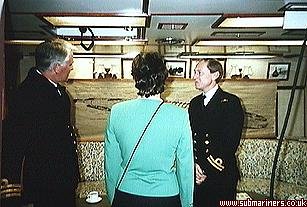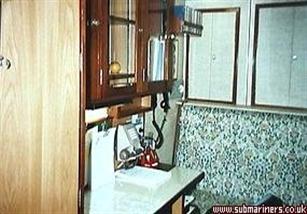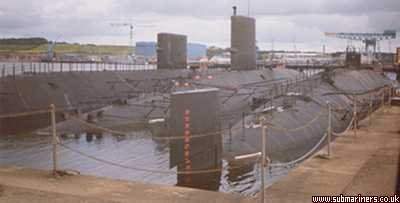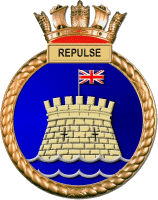Decommissioning of Repulse
Photos and News Clips of the decommissioning of Repulse
Cold War warrior sails into sunset May 14th 1996
ANOTHER symbol of the Cold War disappeared yesterday as Repulse, the Royal Navy's last operational Polaris submarine, finished its final patrol . Admiral Sir Jock Slater, First Sea Lord, joined Repulse at dawn as she returned up the Clyde for the last time, to report back to the Faslane submarine base after several weeks at sea.
The vessel's mooring brought an end to 28 years of Resolution-class submarines, whose distinctive black and white Polaris missiles provided Britain 's ultimate nuclear deterrent throughout the years of the Cold War.
Since Resolution, the first of Britain 's four Polaris carriers, put to sea in July 1968 a Royal Navy strategic nuclear submarine has been at sea 24 hours a day, 365 days a year. Maintaining radio silence for long periods, the location of the Polaris boats was known to only a handful of senior Navy figures and Government members.
The Polaris weapon system, primitive by modern standards but devastating nonetheless, meant that the commander of each submarine had more firepower than all of the bombs dropped in the Second World War. Each commander maintained a high level of preparedness for weeks on end, needing only 15 minutes to launch the weapons.
The job of providing Britain 's strategic nuclear cover now falls to the two Trident boats, Vanguard and Victorious, which are more than twice the size of the Polaris vessels, with even more firepower.
The announcement that Repulse had completed her final patrol was earlier than expected and was made, partly, to avoid confrontations with anti-nuclear demonstrators. The Polaris submarines have had to be paid off earlier than planned because of problems with their nuclear reactors. In 1990 cracks were discovered in pipes in the primary cooling systems that lead from the main reactors.
Repulse will be disarmed later this year and decommissioned before being sailed to the Rosyth dockyard to join the other Polaris boats, Renown, Resolution and Revenge. She will be stripped of her nuclear generator and the highly radioactive material will be sent to Sellafield for processing. After the high-level radioactive material has been removed she will be relatively harmless but no decision has been taken by the MoD as to the ultimate fate of the four Polaris submarines' hulls.
Last Polaris submarine goes into storage
August 29th 1996
THE Royal Navy's last Polaris submarine was decommissioned yesterday, ending an era of British military history that began in the years of the Cold War.
Repulse, one of four Resolution-class submarines, was decommissioned at a ceremony attended by the Prime Minister and Defence Secretary.
"Throughout turbulent years, the Polaris force has always been there - always ready, always prepared, always the ultimate guarantee of this country's security," Mr Major told an audience of former crew members and senior officers at the Faslane submarine base on the Clyde in Scotland .
From 1968 until May of this year at least one of the Navy's Polaris boats was at sea armed with missiles capable of travelling 2,500 miles and of delivering a nuclear explosion 10 times that of Hiroshima . Although Polaris boats were conceived in an era when Britain's perceived threat came from the Warsaw Pact the uncertainty of the post-Cold War era means the Government maintains a strategic nuclear deterrent now carried in the Vanguard-class submarines armed with Trident missiles.
"I have no doubt that we are right to maintain a minimum credible strategic nuclear deterrent for the UK ," Mr Major said."We will continue to do so for as long as our security needs require us to do so. It would be folly for us to act differently. Even though circumstances have changed, the world still remains an uncertain and dangerous place."
Hymns were sung as the White Ensign was lowered for the last time over Repulse which completed its 60th patrol in May. The nuclear weapons have already been removed for dismantling and nuclear fuel rods will be taken from its power plant before it is towed for long-term storage at Rosyth.
Mr Major paid tribute to the men who had mounted the deterrent patrols "undetected by friend or foe - every minute of every day of every year from 1969 to May this year". He recalled how the Polaris era had begun in 1968 at a time of high East-West tension, the Vietnam war and the Soviet Union's invasion of Czechoslovakia .
Among today's guests at Repulse's decommissioning ceremony was Lady Zuckerman, wife of the Government's then chief scientific adviser. She launched the submarine in 1967 with a bottle of her homemade elderberry wine.
Mr Portillo said the nuclear deterrent had been a "major contribution" to post-war peace. "It was the fact that no enemy was willing to take on the nuclear deterrent in the West that preserved the peace," he said. "We hope not to have to use these weapons, but having these weapons is the best guarantee we won't have to go to war."
Repulse is the 11th nuclear-powered submarine to decommissioned. Four are stored at Devonport and Repulse will become the seventh at Rosyth. A Ministry of Defence spokesman said that the 11 hulls posed no health threat although a final decision on their fate had not yet been taken. It is likely they will be cut down once the Government's planned deep nuclear waste depository is built early in the next century.
________________________________________________________________________________________________________________
The Repulse was finally decommissioned on the 28th August 1996 at Faslane, Scotland. In the presence of the then Prime Minster John Major and Defence Secretary Michael Portillo, invited guests and past and present crew members.
There was a service held at which prays and hymns were offered and the Naval Ensign was lowered for last time and the Repulse opened to visitor during the afternoon.
HM Submarine Repulse now lays at Rosyth Dockyard never to be used again...... or to be visited again.
VIDEO OF DECOMMISSIONING CEREMONY
